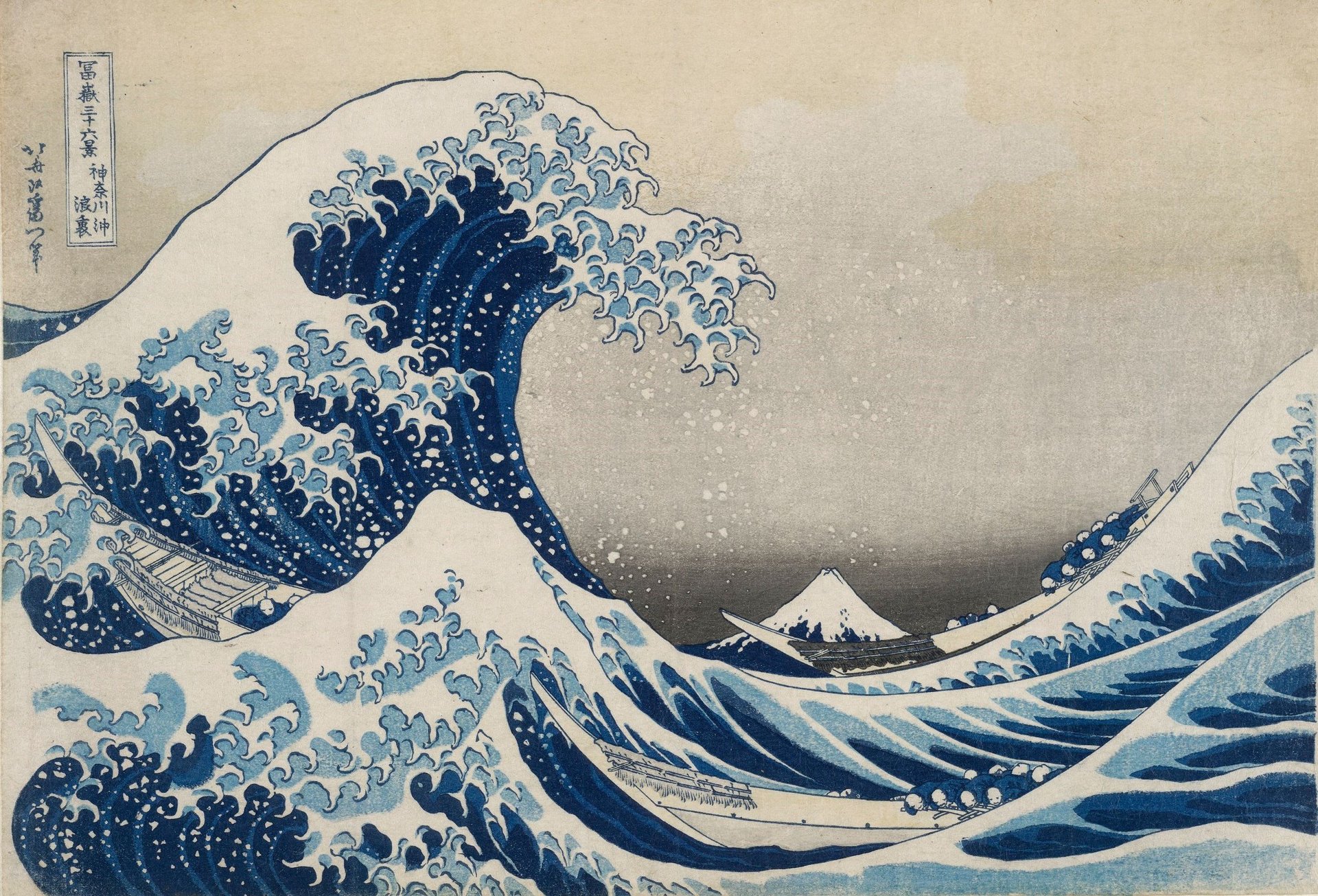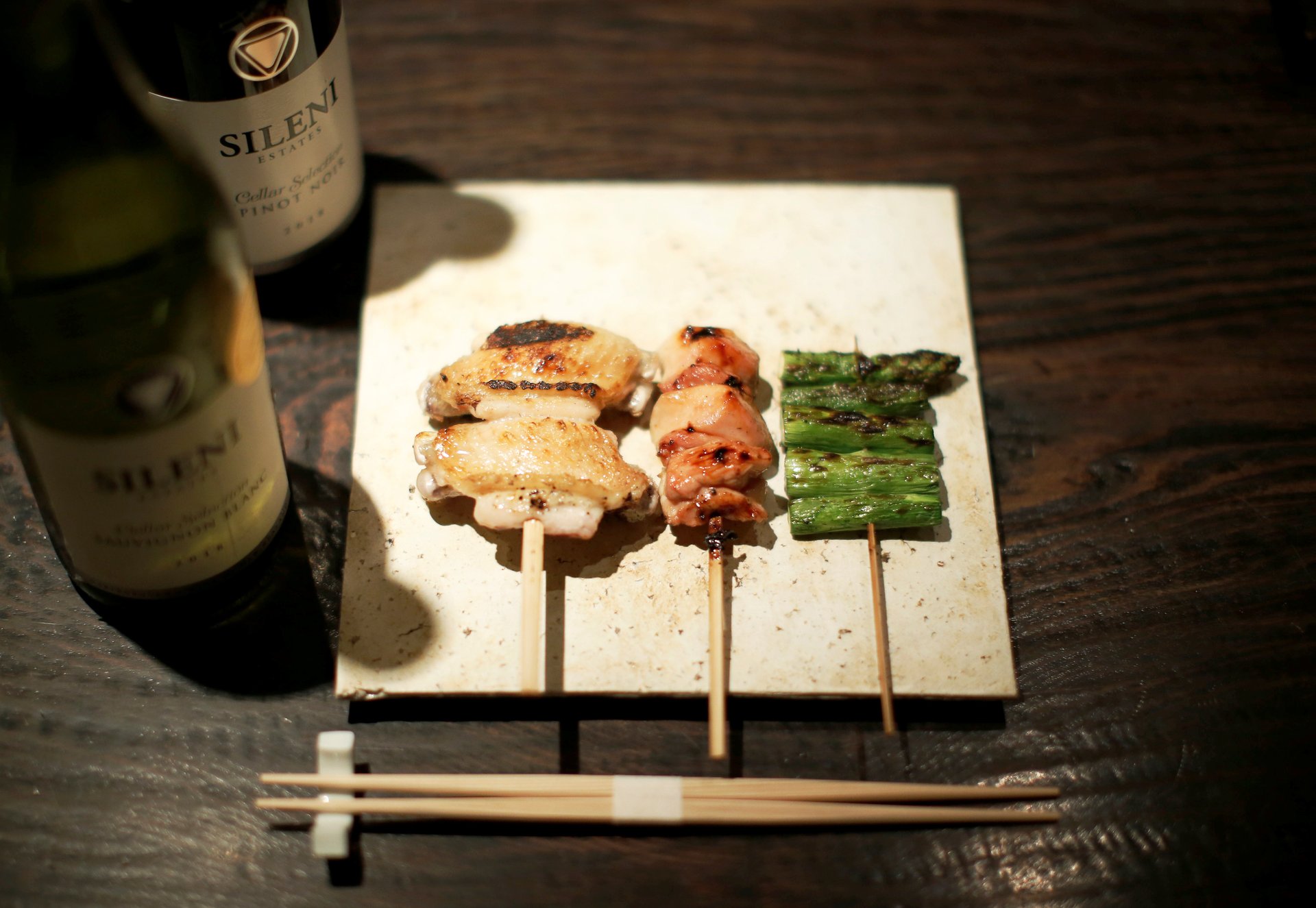Quartzy: the obsessed with Japan edition
Happy Friday!

Happy Friday!
It’s me, Quartz fashion reporter Marc Bain. For Americans like myself, and for much of the West, Japan has become shorthand for cool, creative, and sometimes wacky. It’s the homeland of kawaii and Tokyo’s Harajuku, weird game shows and Hello Kitty, manga and anime. (For those who don’t know, manga are print books, like comics and graphic novels. Anime is animation, and it’s often based on manga.)
That public image is radically different than the fearsome military empire that Westerners, especially Americans, saw in Japan before and just after World War II. Following the devastation of the war, the country had to reinvent itself—and did, gradually becoming a manufacturing powerhouse that churned out cars and revolutionary consumer electronics, like Sony’s Walkman in 1979.
Along the way, something else was happening: Japanese characters made their way to American shores. First came Godzilla, and then through the 1960s and 1970s, the cartoons Astro Boy, Speedracer, and Battle of the Planets captivated American children.
The big breakthrough came in the mid-1980s when Nintendo released its entertainment system, sending kids clamoring to command a tiny plumber named Mario on his mission through the Mushroom Kingdom. A torrent of games, manga, anime, and other pop culture have followed—Pókemon, the mystical universe of animation company Studio Ghibli, and more—steadily shifting how Westerners think of Japan, one creative act at a time.

Marvel v. Japan. The US entertainment industry has noticed the global appetite for content from Japan. There are more than a dozen recently released and forthcoming movies or TV series based on Japanese manga, anime, or games—titles including Pokémon Detective Pikachu, My Hero Academia: Heroes Rising, Naruto, Gundam, Metal Gear Solid, and others.
Tetsu Fujimura is an executive producer whose company, Filosophia, has helped bring Japanese titles such as Ghost in the Shell and Cowboy Bebop to American audiences. He recently told me it’s the beginning of a new era. “Japanese IP could be the next Marvel,” he said—IP referring to intellectual property, basically meaning original works.
To Fujimura’s point, if you look at the US market for comics and graphic novels, manga titles actually hold a greater share of the market than superhero stories. One reason may be that manga are packaged to be easily accessible for newcomers compared to superhero narratives, which can require knowing an extensive backstory to understand the latest issue. Still, superheroes have competition.

Deep roots. The modern form of manga came about in the 1950s and 1960s, when Japanese publishers started printing weekly manga magazines similar to graphic novels. One of the industry’s most influential figures is Osamu Tezuka, who created the Astro Boy manga, known in Japan as Mighty Atom.
But the origins of the form reach back much further, to the artist Katsushika Hokusai, who started to publish his “Hokusai manga” picture books in 1814. (Manga translates roughly to “whimsical drawings.”) They’re not quite a direct ancestor, since he filled his books with varied sketches and didn’t follow one storyline. But he helped establish a manga tradition, and became one of the first Japanese artists to achieve popularity in the West.
French painters went nuts for his work during a craze for Japanese design called Japonisme that swept Europe in the decades after the US Navy steamed into Edo Bay—now Tokyo Bay—in 1853 and forced Japan to open its ports. The Great Wave is probably Hokusai’s best-known piece.

Dressed for success. Personally, my favorite cultural export from Japan is its fashion. The country is the source of some of the coolest design of the past several decades. While there’s no single look that characterizes Japanese fashion, there are strengths shared in varying degrees among several of the country’s top designers. They include:
- innovative patterns and cuts
- thoughtful and/or unusual fabric choices
- an exacting eye for detail and construction
- silhouettes that drape on or abstract the body, rather than conform to it
Here’s a quick rundown of just a few designers worth getting to know better on your own:
Yohji Yamamoto: Loves the color black and working with volume. No one has reimagined the black blazer with as much ingenuity and consistency as Yohji.

Chitose Abe: The designer of Sacai, she’s a master of mashups, combining contrasting fabrics like wool and nylon in clothes that are equally sophisticated and sporty. Even Nike is a fan, having tapped her for a collaboration.
Jun Takahashi: While his company Undercover was a pioneer of streetwear—the dominant force in menswear in recent years—it also does incredible womenswear. He pulls lots of references and graphics from movies, music, and art.
Rei Kawakubo: The pieces she creates for her company, Comme des Garçons, can be more like wearable fabric sculptures than clothes. The real work of art is the retail empire she’s built, encompassing several clothing lines and the Dover Street Market stores.
Junya Watanabe: His menswear chops up and remixes—sometimes literally with all his patchwork—lots of British and American sportswear, while his womenswear is full of dazzling experiments in new shapes and constructions.
Hiroshi Fujiwara: The godfather of Japanese streetwear and a multidisciplinary artist, Fujiwara is pretty much able to channel cool right into the different products he creates for his firm Fragment Design, frequently in collaboration with big companies like Nike or Moncler.
The artisan spirit. Some might argue that Japan’s best days as a cultural exporter are behind it. A lot of the creations most popular outside the country, such as Pókemon or Dragonball Z, are products of the 1980s and 1990s. Fewer are recent. Korea has become the pop-culture powerhouse churning out new hits in Asia.
But a country doesn’t need to keep cranking out new stuff to be culturally influential, as writer W. David Marx, author of a book on Japanese menswear and an astute cultural observer, recently told me. Just look at Italy. Japan, he pointed out, is known for quality. Even if it didn’t make the original of something itself, it’s adept at reproducing it with an exacting devotion to authenticity.
There’s a term, shokunin, that’s a bit hard to translate. As I understand, it roughly means “artisan,” but also connotes a lifetime commitment to craft. It’s something that suffuses a lot of Japanese cultural products, whether manga, fashion, or food. As long as that spirit persists, consumers around the world will be looking to Japan.
Enjoy the weekend.



Best. Lady Macbeth. Ever. If you’re still stuck home and looking for a movie to check out, I highly recommend director Akira Kurosawa’s Throne of Blood. It’s an adaptation of Shakespeare’s Macbeth set in feudal Japan. Yeah, it’s intense. Visually it’s incredible. There are lots of fog-shrouded forests and elements of Japanese Noh theater that create a truly unique cinematic atmosphere. It’s creepy, and no element is more chilling than Lady Asaji Washizu, the film’s ghostly counterpart to Lady Macbeth. Bonus: The movie inspired Undercover’s fall 2020 men’s and women’s collections.